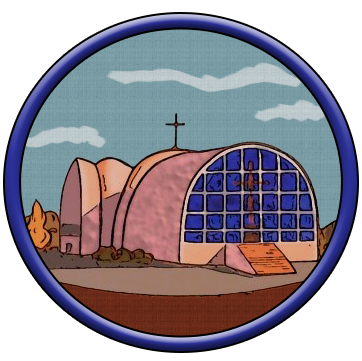The Daily Cycle of Prayers
![]() In the Christian East, the Church’s day begins at evening, and its services run from sunset to sunset:” Since early times, it was customary for Christians to gather in church to prayer. The offices of Vespers (at sunset) and Matins (at sunrise) are extremely ancient, and make use of the natural symbols of light and darkness to evoke thanksgiving and praise.
In the Christian East, the Church’s day begins at evening, and its services run from sunset to sunset:” Since early times, it was customary for Christians to gather in church to prayer. The offices of Vespers (at sunset) and Matins (at sunrise) are extremely ancient, and make use of the natural symbols of light and darkness to evoke thanksgiving and praise.
The evening prayer of Vespers marks the moment of sunset, and the beginning of the church’s day. We thank God for the blessing of creation, especially for the gift of light both corporeal and spiritual, and ask pardon for our sins and offenses and protection through the night.
In early Christianity, prayer at night was also common, either at home or in church. These developed in to the office of Compline at bedtime (with a special form, Great Compline, on the evenings of fasting days) and the nocturnal vigil of the Midnight Office. Each of these services has its own character: the prayers of Compline ask for God’s protection through the night, while the Midnight Office calls us to watchfulness for the coming of Christ, “like a thief in the night.”
The early morning service of Matins(called “Orthros” or “sunrise” in Greek) is a solemn prayer of the Church, an office of supplication, repentance, and of praise. This service concludes with prayers for all the needs of the church and the world.
Christianity inherited from the Jews and the Gospel tradition the practice of praying several times during the day, and under monastic influence they developed in the various Hours of the day (First, Third, Sixth, and Ninth Hours). These times of prayer take their names from the Roman practice of dividing both the day and night into twelve equal periods or “hours”; that is why, for example, the “third hour [of the day]” is around 9 o’clock in the morning.
Finally, a short service called Typika may be celebrated on days when there is no Divine Liturgy. It uses the hymns and readings appointed for the day’s Divine Liturgy, and at one time included a service of Holy Communion.
The following table lists the services that are celebrated daily in monasteries and churches of the Byzantine liturgical tradition around the world:
| Service | Time of celebration (approximate) | Themes |
| Vespers | Sunset | Thanksgiving for creation; Christ the light of the world |
| Compline | Late evening | Protection during the night |
| Midnight Office | During the night | Meditation on the unexpected coming of Christ |
| Matins | Sunrise | Supplication and praise of Almighty God |
| First Hour | 7 AM (or immediately after Matins) | Prayer at the beginning of the day’s work |
| Third Hour | 9 AM | Descent of the Holy Spirit at Pentecost |
| Sixth Hour | 12 noon | Crucifixion of Christ |
| Ninth Hour | 3 PM | Death of Christ |
| Typika | varies | Psalms and prayers of the day |
Together, these services are called the Divine Praises. They serve to sanctify the day, keep the believer’s mind attentive to God’s presence, and provide us with regular moments of prayer.
The Divine Liturgy is not included among these services, as it is considered to exist outside of time.
Adapted from: Daily Cycle by the Metropolitan Cantor Institute
